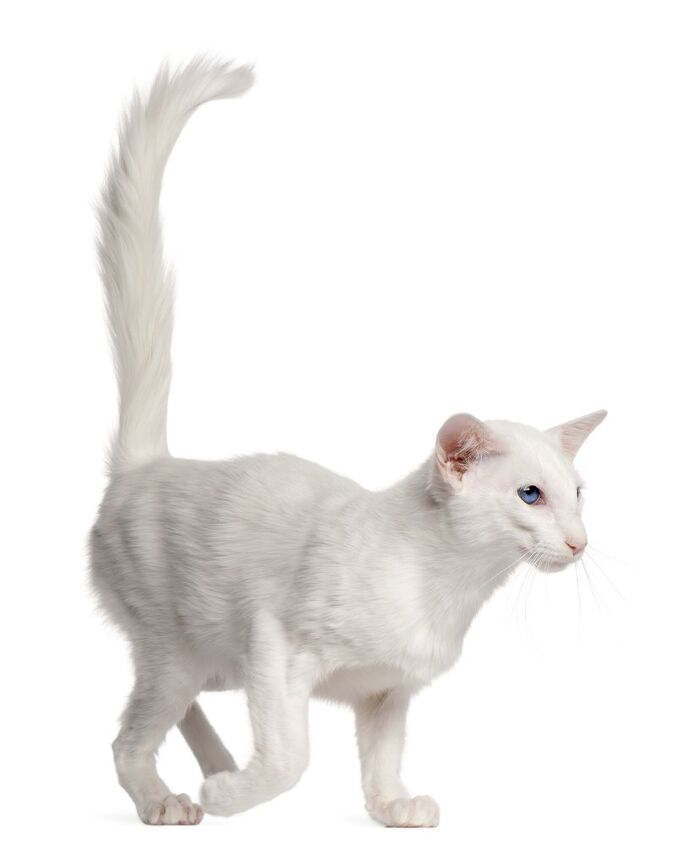Balinese


About Balinese
The generally accepted theory for the appearance of the Balinese is a spontaneous mutation in Siamese cats for long hair. They do not come from Bali, but originated in the United States. There is only one gene difference between the two breeds. In all probability, longhaired Siamese kittens occasionally appeared, and one was registered with the Cat Fanciers Federation in 1928. In the 1950s, however, the idea caught the imagination of breeders who made a serious effort to promote the mutation into a stand-alone breed. In the 1960s, Helen Smith of MerryMews Cattery bestowed the name “Balinese” on the cats, which she compared to Balinese dancers. The breed was granted CFA grand championship status in 1970.
Elegant, graceful, and intelligent, the long lines of the Balinese create a svelte, muscular cat that is both supple and strong.
Elegant, graceful, and intelligent, the long lines of the Balinese create a svelte, muscular cat that is both supple and strong. These long-haired beauties have a more than healthy curiosity about life — primarily yours. The alert sapphire eyes sparkle with inquisitive good humor, to the point that Balinese are often described as big-hearted clowns. They have been rated as the most intelligent of all the long-haired breeds. If left on its own for long periods, the Balinese becomes terribly lonely. They are definitely playful, people cats and enjoy being with a family, following their humans from room to room talking. They are easy going, and do well with other pets.
Similar in physical confirmation to the Siamese, the Balinese has a long, slender body that belies this cat’s natural athleticism. Look for engaging blue eyes set in a wedge-shaped head. Two types are shown, the “traditional” and the “contemporary.” The traditional sports a coat about two inches longer, and it is the sturdier variant of the breed. The contemporary is reminiscent of the Ragdoll, with a semi-rounding of the muzzle and ears. The Balinese has rather large ears, a straight nose, and almond eyes.
The Balinese coat can be found in frost, chocolate, seal, cream, red, blue, lilac, and fawn. The seal, chocolate, blue, and lilac are the traditional Siamese colors. Red, cream, and tabby patterning were recognized as acceptable for the breed in 1979, and there are also some tortoiseshells of all colors with both solid and tabby points.
The silky flowing coat of the Balinese has remarkable qualities. It lies close to the body, conforming to the cat’s natural lines, but it does not mat because it has a single layer only. At the tail, the hair forms a regal plume. These characteristics make the Balinese unusually low maintenance for a longhaired cat. Brushing twice a week should be all that is required to keep its coat in top condition.
Photo credit: Eric Isselee/Shutterstock

Amy Tokic, Editor of PetGuide.com, is a passionate animal lover and proud pet parent of Oscar, a Shih Tzu/Chihuahua cross, and Zed, a Japanese Chin. Her love of animals began in kindergarten, when she brought her stuffed dog Snoopy into class with her every day. Now, she writes about her adventures in pet ownership and tirelessly researches products, news and health related issues she can share with other animal enthusiasts. In her free time, Amy loves perusing used book and record stores, obsessing over the latest pet products available and chasing squirrels with wild abandon (a habit attributed to spending too much time with her pooches).
More by Amy Tokic

























